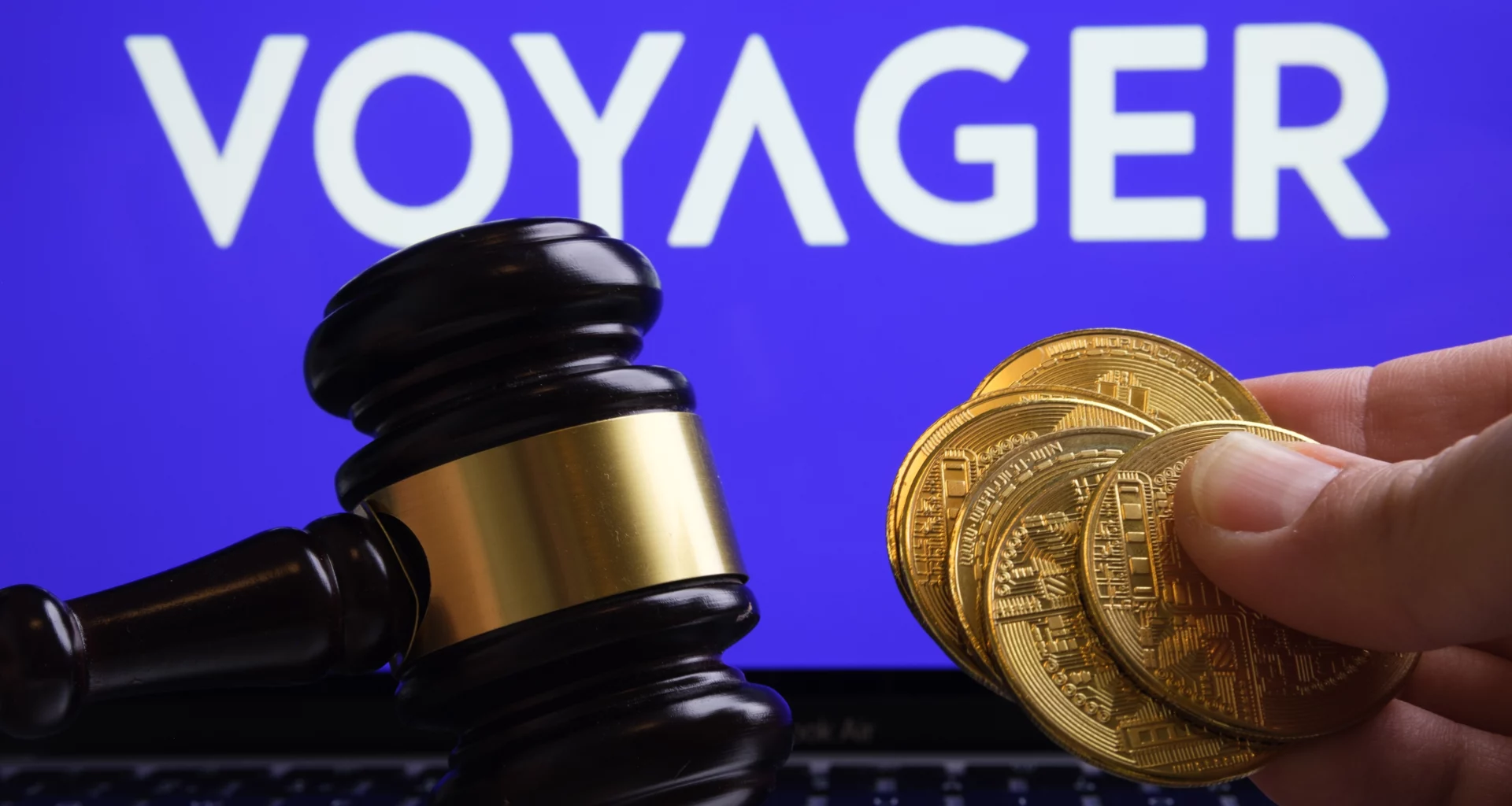When naming a blockchain-based financial services company, it sure makes sense to jump onto the crypto trend of astronomy-based nomenclatures.
After all, we all grasp quite easily what ‘going to the moon’ or a ‘moon-shot’ are, even if we skipped Blockchain 101 or are not as lingo-savvy as your average Twitter user. And the same can be said for all the rocket-themed initiatives, the celestial influences in branding strategy and even for the thought-process behind naming the most popular cryptocurrency ever after Bitcoin.
We tend to like this approach as it suggests two things: that crypto has a place in the future, and that its value is only going up. In Voyager’s case, neither of these seems to be likely – and that’s despite naming the lender after a satellite that has been travelling through space without issues since 1977.
What Happened To Voyager?

Both are good questions, but let’s go in order.
Voyager is a digital asset management firm – a provider of staking and lending services, and a pretty large one too, at least relative to the market it sits in. At the height of their success, they counted on 3.5 million users and $5.9 billion in assets – behind other behemoths of the space like Celsius and it’s reported $18bn in assets, but with a far wider customer base than most competitors.
While a much better-run company than some of the other ‘centralised decentralisation providers’ that crumbled earlier this year, Voyager was unable to escape the gravitational pull of the crypto-lending black hole that opened up with the end of the 2020-2021 bull run.
The details are known partly as CEO Steve Ehrlich has opted for a very transparent and communicative approach throughout the crisis (again, unlike Celsius), and partly because the situation very quickly evolved into a Chapter 11 bankruptcy filing. Luckily for depositors and creditors, this was started with the goal of reorganisation and restructuring, rather than leading into a liquidation timeline.
This came shortly after pausing withdrawals on July 1st, a move which was forced by a variety of factors but that originated in the excessive trust Voyager executives had placed in their debtors.
Through the crypto boom of 2021, they allowed the now infamous Three Arrows Capital (3AC) hedge fund to undertake gigantic loans without providing any substantial capital. 3AC had, in turn, made a huge gamble on Terra’s UST stablecoin – and when its price suddenly depegged and precipitated a market-wise crisis, the house of cards fell in one big sweep.
Unable to pay off their loans, 3AC executives quite literally disappeared, citing personal safety fears as the reason for their unanswered emails and unpaid bills. The subsequent crypto collapse caused several other big names in the space to fall, like (you guessed it) Celsius Network and Babel Finance, starting a terrifying domino effect.
Initial emergency measures put into place by Voyager failed, and when Celsius drastically interrupted withdrawals from their platform on June 12, this started several bank runs at similar lenders – including Voyager.
The company’s initial daily withdrawal limit of $10,000 per day did nothing to stem the issue, and by the end of that month Voyager’s fate was sealed.
A New Hope

Despite this bleak scenario we just painted, it seems that there’s still some belief in the notion that Voyager can soar once again – or at least that there are valuables among the rubble.
The company has reportedly rejected a post-bankruptcy offer from the Alameda / FTX group – a conglomerate of trading firms and crypto exchanges owned by the aptly named billionaire Sam Bankman-Fried. They went further, calling the offer ‘low ball’ and stating that it was a predatory attempt at stealing away Voyager’s remaining assets for cheap, after leveraging customer dissatisfaction and impatience.
FTX had, indeed, offered to purchase all outstanding debt from Voyager, aside from the funds owed by Three Arrows Capital. They claimed this would allow them to reimburse all creditors early (though not in full), much earlier than what the normal course of bankruptcy proceedings would. Very conveniently for FTX, the reimbursement procedure would involve creating an account held on an FTX-controlled platform.
To make matters more complicated, Alameda is one of Voyager’s largest creditors – with unsecured loans worth up to $75 million now hanging in the balance.
Despite this, Voyager seems eager to stick to their rejection: they claim to have been contacted by 88 (!) interested parties for an acquisition, and that most of those offers involve better terms for both the company and its remaining (captive) customers. They also went as far as issuing a cease and desist letter when FTX claimed they were turning down a deal that customers might have preferred.
Voyager Strikes Back?

Earlier this month, Voyager announced that it had received permission from the court to begin returning an initial $270 million in cash to creditors, after having its Metropolitan Commercial Bank (MCB) funds released.
If all goes to plan, these funds will be released on August 11th, over a month after anyone was ever able to withdraw anything from Voyager. That said, to many customers of other platforms, such a short timeline now appears sadly enviable.
Note: This article might continue to be updated as events unfold.









